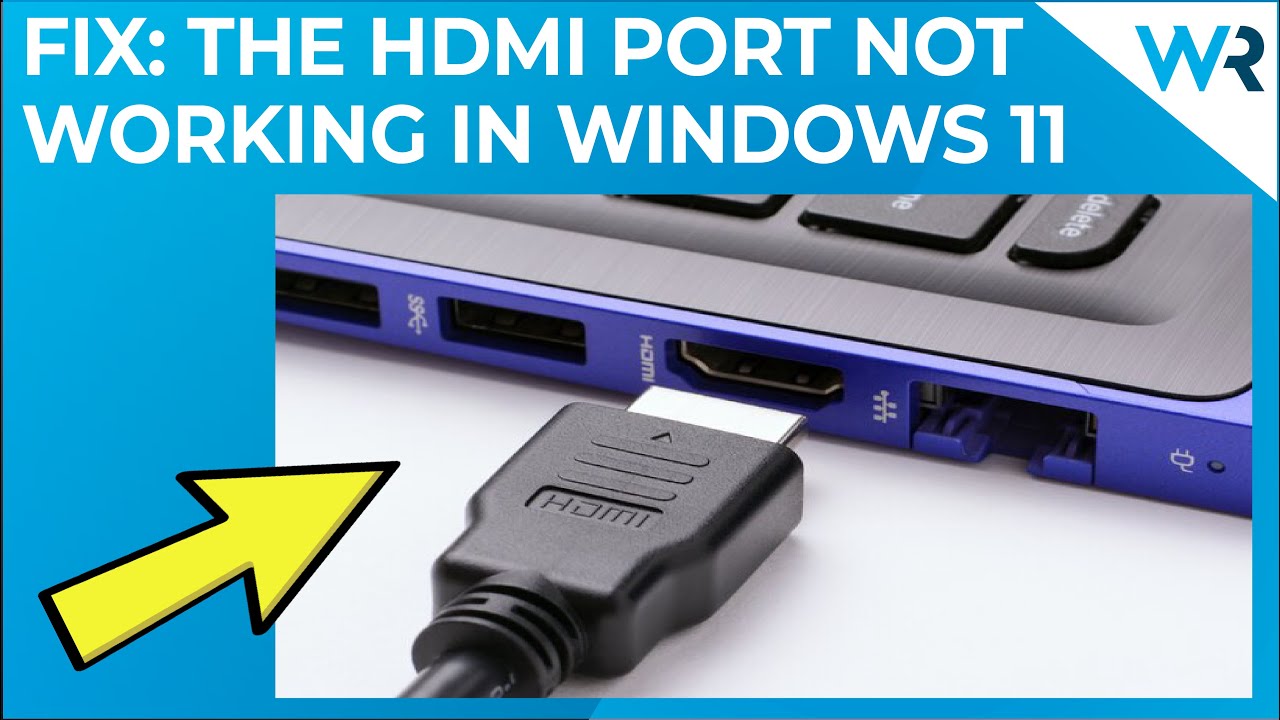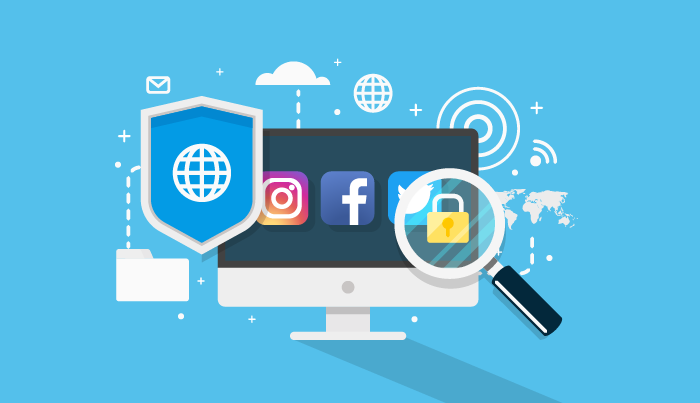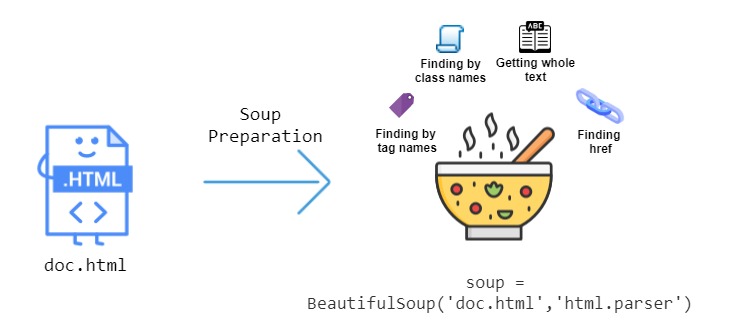Why Your HDMI is Not Working

Have you ever encountered the frustrating situation where your HDMI connection fails to establish, leaving you with a blank screen and a host of unanswered questions? It's a common issue that can occur with any HDMI-enabled device, be it a laptop, gaming console, or television. This article aims to delve deep into the world of HDMI troubleshooting, providing an expert guide to help you identify and rectify the reasons behind your HDMI woes.
Understanding HDMI and Common Connection Issues

HDMI, or High-Definition Multimedia Interface, is a ubiquitous digital connection standard that has revolutionized the way we experience audio and visual content. Its versatility and ability to transmit high-definition signals make it an essential component in modern entertainment and computing setups. However, despite its widespread adoption, HDMI connections can occasionally fail to work as expected, leading to a range of issues that can be both perplexing and frustrating.
The most common symptom of an HDMI malfunction is a lack of signal or a "no signal" error message. This can occur for a multitude of reasons, ranging from simple configuration errors to more complex hardware or firmware issues. In some cases, the issue may be as straightforward as a loose connection or incorrect settings, while in others, it could be a sign of a more serious problem with the HDMI port, cable, or even the device itself.
Potential Causes and Their Identification
When faced with an HDMI connection issue, the first step is to identify the root cause. This process can be daunting, given the myriad of potential problems that could be at play. However, by systematically checking and eliminating potential causes, you can often narrow down the issue to a specific component or setting, making the troubleshooting process more manageable.
Here are some of the most common causes of HDMI connection failures and some tips on how to identify them:
- Loose or Damaged Connections: A simple yet often overlooked issue is a loose HDMI cable or connector. Check that the cable is securely plugged into both devices, and inspect the cable for any signs of damage, such as frayed wires or bent pins. If the cable appears damaged, it's worth replacing it with a new one.
- Incorrect Settings: HDMI connections require specific settings to function correctly. Ensure that both devices are set to the correct input/output and that the resolution and refresh rate are compatible. If you're using an HDMI switch or splitter, check that it's functioning properly and that the correct port is selected.
- HDCP (High-bandwidth Digital Content Protection) Issues: HDCP is a form of digital rights management that can sometimes cause HDMI connections to fail. If you're trying to play copyrighted content, such as a Blu-ray disc or certain streaming services, ensure that both devices support HDCP and that it's enabled. Some older devices may require firmware updates to support HDCP.
- Incompatible Devices: HDMI is a versatile standard, but not all devices are created equal. Check the specifications of both devices to ensure they support the same HDMI version and features. For instance, an older device may not support the high-bandwidth requirements of 4K or HDR content.
- Defective HDMI Ports or Cables: Over time, HDMI ports can become damaged or wear out, leading to connection issues. Similarly, HDMI cables can degrade or become faulty. If you've ruled out other potential causes, it's worth trying a different HDMI port or cable to see if the issue persists.
Troubleshooting HDMI Connection Problems

Once you’ve identified the potential cause of your HDMI issues, it’s time to take action and troubleshoot the problem. Here are some systematic steps you can follow to resolve common HDMI connection problems:
Step 1: Check the Basics
Before diving into more complex troubleshooting, ensure that you’ve covered the basics. This includes checking that both devices are powered on and properly connected, with the HDMI cable securely plugged into the correct ports. Also, ensure that the HDMI cable is in good condition and that there are no visible signs of damage.
Step 2: Verify Settings
Next, verify that the HDMI settings on both devices are correct. Ensure that the output device (e.g., laptop) is set to the correct HDMI output and that the input device (e.g., TV) is set to the correct HDMI input. If you’re using multiple HDMI inputs, make sure you’re selecting the correct one on the TV or display.
Additionally, check the resolution and refresh rate settings. Ensure that they are compatible with both devices and that they match the content you're trying to display. For instance, if you're playing a 4K HDR video, ensure that both devices support 4K HDR and that the settings are correctly configured.
Step 3: Try a Different Cable and Port
If the issue persists, try using a different HDMI cable and a different HDMI port on both devices. This will help you determine whether the issue lies with the cable, the port, or both. If the issue is resolved by using a different cable or port, you may need to replace the faulty component.
Step 4: Update Firmware and Drivers
Outdated firmware or drivers can sometimes cause HDMI compatibility issues. Check the manufacturer’s website for the latest firmware updates for both devices, and ensure that you have the latest drivers installed for any HDMI-related components, such as graphics cards or HDMI switches.
Step 5: Check for HDCP Compatibility
If you’re trying to play copyrighted content and HDCP issues are suspected, ensure that both devices support HDCP and that it’s enabled. On some devices, HDCP may need to be manually enabled in the settings. Refer to the device’s manual or manufacturer’s website for specific instructions.
Advanced Troubleshooting and Expert Tips
If the basic troubleshooting steps don’t resolve your HDMI issues, it may be time to delve into more advanced troubleshooting techniques. Here are some expert tips to help you tackle more complex HDMI problems:
Inspect HDMI Port for Physical Damage
Over time, HDMI ports can suffer from physical damage, such as bent pins or corrosion. Inspect the HDMI port on both devices for any signs of damage. If you notice any issues, you may need to have the device repaired or replaced.
Check HDMI Cable for Degradation
HDMI cables can degrade over time, especially if they’re frequently used or subjected to harsh conditions. Inspect the cable for any signs of wear and tear, such as frayed wires or damaged connectors. If the cable appears degraded, it’s worth replacing it with a new, high-quality cable.
Test with a Different Device
If you suspect that the issue lies with one of the devices, try connecting a different device to the HDMI port. For instance, if you’re having issues with your laptop, try connecting a different laptop or gaming console to the same HDMI port. If the issue persists, it’s likely a problem with the HDMI port or cable. If the issue is resolved, it’s likely a problem with the original device.
Contact Manufacturer Support
If you’ve exhausted all other troubleshooting options and the issue persists, it may be time to contact the manufacturer’s support team. They can provide further guidance and support, and in some cases, may offer warranty repairs or replacements.
Preventing Future HDMI Issues
While HDMI connections are generally reliable, issues can occasionally arise. To minimize the chances of future HDMI problems, here are some best practices to follow:
- Use High-Quality HDMI Cables: Invest in reputable HDMI cables that meet the latest HDMI standards. Cheaper cables may not meet the required specifications, leading to potential compatibility issues.
- Regularly Update Firmware and Drivers: Keep your devices' firmware and drivers up to date to ensure optimal compatibility and performance. This is especially important for devices with HDMI ports.
- Handle HDMI Cables with Care: Avoid bending or twisting HDMI cables excessively, and keep them away from sharp objects or heat sources. Proper care can help prolong the life of your HDMI cables.
- Clean HDMI Ports Regularly: Dust and debris can accumulate in HDMI ports over time, potentially causing connection issues. Use a soft, dry cloth to gently clean the HDMI ports on both devices to ensure optimal connectivity.
Future Trends and Innovations in HDMI Technology

As technology continues to evolve, so too does the HDMI standard. Here’s a glimpse into the future of HDMI technology and some of the innovations we can expect to see in the coming years:
HDMI 2.1 and Beyond
The latest HDMI standard, HDMI 2.1, offers a range of advanced features, including support for 8K resolution, dynamic HDR, and variable refresh rates. HDMI 2.1 is backward compatible with older HDMI standards, ensuring that existing devices can still be used with new HDMI-enabled devices.
Future iterations of HDMI are expected to continue pushing the boundaries of what's possible, with potential enhancements including even higher resolutions, faster refresh rates, and improved audio capabilities.
Wireless HDMI
While wired HDMI connections are still the most common, wireless HDMI technology is gaining traction. Wireless HDMI allows for seamless connectivity between devices without the need for physical cables. This technology is particularly useful for applications where cable management can be challenging, such as in-car entertainment systems or wireless home theater setups.
HDMI Over IP
HDMI over IP (Internet Protocol) is a technology that allows HDMI signals to be transmitted over a network, similar to how data is transmitted over the internet. This technology enables greater flexibility and scalability in HDMI connectivity, making it ideal for large-scale installations or complex AV systems.
Conclusion: Troubleshooting HDMI Issues Made Easy
HDMI connections can occasionally fail, but with the right knowledge and a systematic troubleshooting approach, you can quickly identify and resolve most issues. By understanding the potential causes and following the expert tips outlined in this article, you’ll be well-equipped to tackle any HDMI problems that come your way.
Remember, HDMI technology is constantly evolving, and staying informed about the latest standards and innovations is key to ensuring a smooth and reliable HDMI experience. With the right tools and knowledge, you can enjoy the full potential of your HDMI-enabled devices, whether it's for work, entertainment, or both.
What should I do if my HDMI cable is damaged?
+If your HDMI cable is damaged, it’s recommended to replace it with a new one. HDMI cables are relatively affordable, and using a damaged cable can potentially cause further issues or even damage your devices. Look for a reputable brand and ensure that the cable meets the latest HDMI standards.
How do I know if my HDMI port is damaged?
+A damaged HDMI port may exhibit signs such as loose connections, physical damage (bent pins or corrosion), or a complete lack of signal. If you suspect your HDMI port is damaged, it’s best to consult with a professional repair service or the device’s manufacturer for guidance on potential repairs or replacements.
Can outdated firmware cause HDMI issues?
+Yes, outdated firmware can sometimes cause compatibility issues with HDMI connections. It’s important to regularly check for firmware updates for both your devices and any HDMI-related components, such as graphics cards or HDMI switches. Updating your firmware can help ensure optimal HDMI performance and compatibility.
Why do I need to enable HDCP for certain content?
+HDCP, or High-bandwidth Digital Content Protection, is a form of digital rights management that is used to protect copyrighted content, such as Blu-ray discs or certain streaming services. Enabling HDCP ensures that your devices can securely transmit and display this protected content. If you’re trying to play copyrighted content and encounter HDMI issues, check that HDCP is enabled on both devices.



